
MAINTAINING YOUR LANDSCAPE - Congratulations on your new landscape installation! To ensure your continued enjoyment of your investment we have recommended a general maintenance schedule for you to follow. This schedule is general and refers to most landscape plantings. If you have any specific questions, please do not hesitate to call us at 610-502-1550. Remember, to ensure that your plants get off to a good start, it is imperative that they are properly maintained.
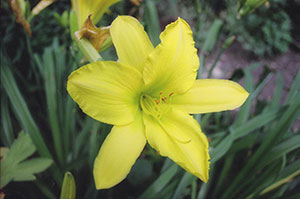
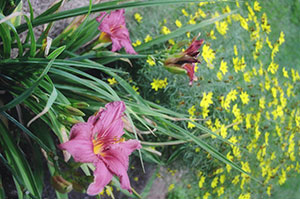
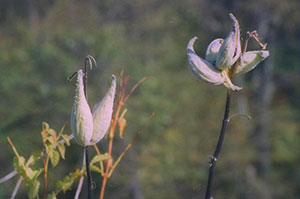
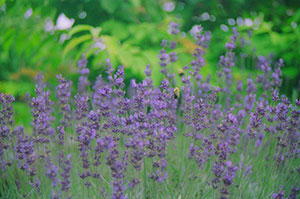
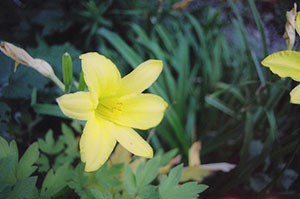

Newly Installed Lawns
The key to establishing a newly installed lawn, whether it is seeded or sod, is proper watering. To measure watering, place an empty can about six feet away from the sprinkler. When there is an inch of water in the can, it is time to move the sprinkler to the next area. Water once a day the first week in the early morning or at night. For the second week, water every other day. After the lawn establishes, or the sod knits to the ground you can water as needed. Mowing can begin when the grass reaches 2-1/2 to 3 inches. Set your mower to a cutting height of 1-1/2 to 2 inches. A good rule to follow is to never remove more than 1/3 of the leaf. Keep leaves, people, pets and toys off the lawn for the first 2-3 weeks. Grass should be fertilized at least twice a year, once around Memorial Day and again around Labor Day. Do not use crabgrass pre-emergent or weed control products within 6 weeks of seeding.

Watering
Proper watering is by far the most important ingredient to establishing and maintaining your investment. A good schedule to follow is to water your plants twice a week. Tress should receive about 15 to 20 gallons, which is about 2 to 2-1/2 minutes with an open-ended hose (without the spray nozzle) and shrubs should receive about 10 gallons or 1 to 1-1/2 minutes. Perennials will frequently dry out faster and should be watered as needed. When watering, apply the water to the base of the plant. It is better to water deeply and less frequently than to lightly water every night. It is also possible to over-water, so before watering again, stick your finger a couple of inches into the soil (making sure you go through the mulch). If the soil is moist, do not water. Check daily and water again when necessary.
For spring and summer installations: water your plants thoroughly twice a week for the first month or two. If we are having a particularly hot or dry summer you may have to water more frequently. However, once the plants are established, once-a-week watering should be sufficient for the remainder of the season through October. Also, monitor your plants the following year during the heat of the summer and they may need a little help until their root structures are completely formed.
Tip: For large landscape installations, try breaking your plants into sections so that you do not have to water everything all at once, do a different section each time. Using oscillating watering heads or a “soaker” hose is not recommended. It would take several hours to saturate the ground to a proper depth. The best way to water is with a rain wand or by removing the spray nozzle and placing your thumb over the end to let the water bubble out. Also, just because it rains don’t assume you don’t have to water. We have to receive at least one inch of rainfall to skip watering.

Perennials
Perennials — What are they? And which ones?
Perennials are hybridized wildflowers and grasses that die down to the ground in the winter, reappearing again in the spring adding texture and long-lasting blooms to your landscape. Caring for your perennials can be as individual as the flowers themselves. However, here are some basic tips to follow:
• Over time as your perennials grow and flourish they will need to be divided. Usually, this should be done every 3 to 5 years. Dividing your plants helps to keep them confined to a smaller area and promotes new growth, which means better foliage and blooms. As soon as the ground is workable in the spring, is usually the best time to divide. Using a shovel or pitchfork, dig up the entire root mass of the plant and pull or cut apart the mass into sections. The part that you want is the outermost part of the plant. This is the most juvenile part and will do best when reinstalled.
• As spring turns to summer, it becomes time to “deadhead,” meaning to remove faded flowers. Sometimes that involves removing only the flower (Coneflower, Blanket Flower, and Meadow Sage) and other times it requires removing the entire stalk (Daylily, Hosta, Coralbells). The removal of spent flowers prevents seeds from forming and encourages repeat blooming. Cutting flowers for arranging also qualifies as deadheading, so don’t be afraid to cut and enjoy a beautiful bouquet of flowers.
• Here’s another good rule to follow — if it looks bad cut it off. Meadow Sage, Bee Balm, Coneflower, Gay Feather, Geranium and Coreopsis can be cut back after blooming and will reward you with another burst of blooms.
Perennials are fairly resistant to pests and diseases, however, one problem can be powdery mildew. This is a fungus that looks like a gray powder that forms on the leaves. Fortunately, only some perennials are susceptible. This problem usually occurs when we have long periods of humidity and moisture. To control this problem, it is easiest to cut the perennial to the ground and discard the foliage.
After the frost kills back the foliage you can cut the plants back 2 to 3 inches. Do not cut back Lavender or Russian Sage. These plants are shrub-like and should be cut back in the spring to the point where the new buds have formed. Cut ornamental grasses back in the spring. They add winter interest to your landscape with their dried leaves and seed heads rustling in the wind.

Pruning
Pruning is another important ingredient in the recipe for maintaining your landscape. Pruning will keep plants at a desired size, promote the best growth for flowers and fruit and allow air and light into a plant for new growth.
There are two basic ways of pruning — shearing with hedge trimmers or hand pruning with hand pruners. Although shearing is probably the most common way of pruning, it is probably not always the best way to prune. Shearing creates dense branching, which forms that “one-inch band of green” around the plant that most of us are familiar with. This makes it impossible for light and air to reach the interior of the plant and that is why it always appears to be bare toward the interior. A better way to prune is to use hand pruners and reach into the plant and cut the branch 6 to 8 inches deep inside the plant. By pruning this way, it will allow light and air circulation into the plant. This will allow the plant to be greener deeper into the interior and help to reduce disease problems. Also, you will give the plant a more natural look and keep the plan at a more manageable size longer because you will be removing more of the branch than by shearing, which only removes 3 to 4 inches. Hand pruning will take longer to do; however, this method of pruning will extend the life and health of your landscape investment. Note: Don’t be afraid to prune well, your plants with good care will be healthy and vigorous and will grow back even from a bad prune job.
We cannot specifically cover every plant available to us today; so the following is a means to give you a general guide to pruning. If you have any specific questions about a particular plant not listed, please call us at 610-502-1550.
Spring Flowering Shrubs (Azalea, Forsythia, Japanese Andromeda, Itea, Lilac, Rhododendron, Sandcherry, Scotch Brom, Viburnum, Weigela, Witchhazel)
These plants bloom on the previous season’s growth and are best pruned directly after they bloom or no later than the beginning of July. If pruned later, you may destroy forming flower buds for next year.
Summer Flowering and Nonflowering Deciduous Shrubs (Barberry, Burning Bush, Hydrangea, Red Stemmed Dogwood, Roses, Rose of Sharon, Spirea)
These plants bloom on this year’s new growth and should be cut back hard in early spring, before new growth begins. This will encourage dense, compact growth. If pruning in summer, prune directly after flowering. Butterfly Bush and Blue Mist Spirea are shrubs that bloom on new wood. They both benefit by being cut back very hard to a height of 12 to 18 inches, and this should be done every spring to control their size, and promote blooming.
Evergreen Shrubs and Trees (Arborvitae, Alberta Spruce, Bird’s Nest Spruce, Boxwood, Gold Thread Cypress, Hemlock, Hinoki, Holly, Inkberry, Juniper, Montgomery Spruce, Yews)
These shrubs or trees can be pruned in later spring … early summer when light green new growth appears again … or in summer, up into the fall. Avoid heavy pruning in the fall, as this may encourage new growth that may not harden off by winter, resulting in winter burning.
All Pines (White, Dwarf White, Swiss Stone, Mugo)
These are best pruned in late spring/early summer when new growth elongates, called “candles.” Pruning must not be done after early July. If pruned later, you will destroy buds forming for next year’s growth. This will cause unsightly “stubs’ to form at the ends of the branches.
Shade and Ornamental Trees (Maple, Locust, Ash, Linden, Dogwood, Japanese Maple, Magnolia, Cherry, etc.)
No unnecessary pruning should be done on trees for at least two years after planting. The tree needs every possible leaf to produce energy to replace the roots that were lost in transplanting. Prune trees of dead, diseased or injured branches, crossing or rubbing branches or to improve the form, shape or size of the tree. Prune spring-flowering trees directly after flowering (Dogwood, Crabapple, Flowering Pear, Flowering Cherry, Redbud, Magnolia, and Serviceberry). Most shade trees are best pruned during the dormant winter season before new growth starts in spring. Some plants bleed heavily after pruning (Maples, Birches, Beeches, and Dogwood). Trees subject to bleeding should be pruned in later spring or early summer when leaves are on the tree.

Fertilizing
Your plants have been installed with slow-release fertilizer tablets, which will be sufficient for the first growing season. After that, an annual application of a general fertilizer should be used in the spring. Acid-loving plans such as Azalea, Boxwood, Dogwood, Holly, Inkberry, Rhododendron and other evergreen shrubs and trees will prefer Hollytone.
To also help aid your plants, maintain a minimum layer of 3 inches of mulch. This will help to keep weeds down, moisture in, and maintain a neat, fresh appearance.

Insects and Diseases
Your plants are susceptible, in the future, to insect or disease problems. It is impossible to cover here all of the signs and symptoms of every pest on every plant. If, in the future, you think or know you may have a pest problem, call us at Landmark or consult your county agent for sound advice. Before you apply any treatment it is best to first correctly diagnose the problem. By applying the wrong treatment, you will either be wasting your time and money, or you can very well make the problem much worse than it already is. It is true that an ounce of prevention is worth a pound of remedy. By properly caring for your plants you will k4eep them healthy and vigorous, making them less susceptible to future pest problems.
One thing to keep in mind is that with any garden don’t try to do everything in one weekend. There is not any one time of year it is best to do all the maintenance. Your garden is meant to be something to enjoy. Nurturing a landscape or garden will reward you with all the pleasures of watching things grow more beautiful with each passing season.

